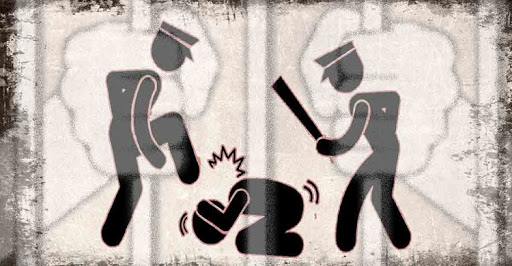The brutal deaths of two shopkeepers (father-son), Jayaraj and Bennix, in Thoothukudi, Tamil Nadu has once again cast the spotlight on the systemic issue of custodial torture and police impunity in India. Many have pointed out the need to expand accountability, beyond the police officers directly involved, to the judicial magistrate who allowed the police to keep the father and son in custody without reasonable justification.
Despite India’s anti-colonial struggle and the establishment of an ‘independent’ nation-state in 1947, the repressive arm of the State; the police system, continues to function on the British colonial model.
Within the criminal justice system, judicial magistrates play a central role in granting or rejecting police remand. The magistrates have a statutory duty to examine the accused person produced before them and ensure that the accused is in good health and physical condition. In Jayaraj and Bennix’s case, the Sathankulam judicial magistrate sent them into police custody without applying his mind to the fact that the offence was of a trivial nature and that there was no urgent need to grant police remand.
Also Read: Satanic Police of Sathankulam: Need to Counter Police High-Handedness
As per Section 167 of the Code of Criminal Procedure, 1973, in allowing remand, the judicial magistrate must see that there is enough material produced by the police to justify the detention of an accused person in custody. Remand cannot be granted when there are no grounds to justify it or when it is an unnecessary curtailment of the accused’s personal liberty. But unfortunately, it has become a common practice for magistrates to grant long periods of remand routinely, without paying close attention to the facts at hand. While judicial magistrates can play an important role in preventing custodial torture, there is also a need to re-examine the structure of the police system itself.
Need for Structural Reforms in the Police System
A public interest litigation has been filed by the People’s Charioteer Organization before the Supreme Court seeking guidelines to be framed to prevent and redress the issue of custodial torture. It highlights the lack of institutional safeguards against police excesses and the abuse of power, and stresses the need for systemic reforms to hold police and judicial officials accountable.
The petition states; “At a time when demands for police reforms are sweeping the world in the context of the “Black/All Lives Matter” movement, the killings of Jayaraj and Bennix are a chilling reminder of how the excessive use of force has become a routine in India, resulting in tragic loss of lives”.
Despite India’s anti-colonial struggle and the establishment of an ‘independent’ nation-state in 1947, the repressive arm of the State; the police system, continues to function on the British colonial model. As the Petitioners point out, the “Indian police system under Indian Police Act, 1861 continues to have colonial coercive machinery which was modelled on Irish colonial paramilitary police”.
Additionally, existing institutional mechanisms have proved to be inadequate in remedying the problem of police impunity and the resulting abuse of force. Complaints filed before the National Human Rights Commission (NHRC) on custodial assaults or deaths have rarely resulted in convictions for police persons indulging in such violence. Although The Prevention of Torture Bill, 2010 and The Prevention of Torture Bill, 2017 have been drafted and deliberated upon, they have not been enacted into laws by the legislature. Section 176(1A) of the Code of Criminal Procedure, inserted in 2005, mandates an inquiry by the Judicial Magistrate or the Metropolitan Magistrate, in addition to the investigation conducted by the police, in cases of custodial disappearance, rape or death. However, this provision too is rarely complied with.
The Supreme Court has, on various occasions, issued directions to curb and punish custodial torture, but few of these have been implemented. The Supreme Court has long held that “custodial torture is a naked violation of human dignity… and whenever human dignity is wounded, civilization takes a step backward”. The Court observed in Re Inhuman Conditions in 1382 Prisons v. State of Assam (AIR 2016 SC 993) that, “in spite of repeated decisions delivered by this Court and perhaps every High Court there seems to be no let-up in custodial deaths. This is not a sad but a tragic state of affairs indicating the apparent disdain of the State to the life and liberty of individuals, particularly those in custody. The time to remedy the situation is long past and yet, there seems to be no will…”.
The inadequacy of incremental reforms so far in curbing custodial torture and the continued existence of a colonial police system should perhaps point us towards examining the more foundational and structural sources of such violence. Just as George Floyd’s death has highlighted the need to radically re-imagine the role and function of the police system in the USA, we must raise the same questions in the Indian context.
Read Next: Losing the Race for Justice: How the Police system shapes America



